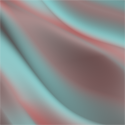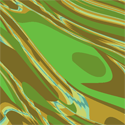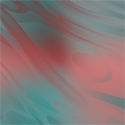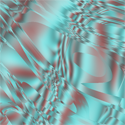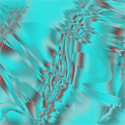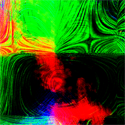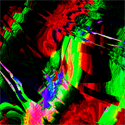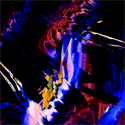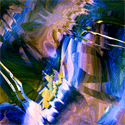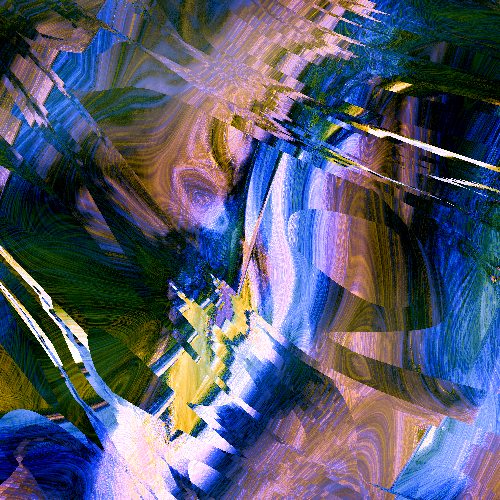The focus of this is to look at Catullus as a candidate for adaptation. This involves several steps. First is the consideration of what, exactly, is being adapted. Is it a poem, a subset, the entire ouevre, or is it the world of the poetry, the character of Catullus, or something else?
The second issue is closely related to the first. What is being extracted and used in the adaptation? What are the rules, systems, and values? This is the core substance of the answer to the first question.
The third and final issue is what shapes or forms should the resulting adapted artifact have? It should express and convey the substance, but adapting Catullus into any medium would necessarily require more than just that, it would require something more, a layering on the original. The question here is: what should be built around the substance, and how deep could or should that be?
background:
It would be good to give a little bit of background about Catullus and the context in which he was writing. The dates of his life are not known exactly, but it is estimated that he lived between 84 and 54 BC. This was during the late phase of the Roman Empire, but Catullus’s death occurred (according to these dates) a good ten years before Caesar’s ascendance to dictatorship in Rome. Many of the notable figures that would later come to clash around the rise of the empire were political contemporaries, and some were even known to Catullus.
It is difficult to get a clear view of Catullus’s life, since there are only a few accounts of him from other sources, and his character put together from his poetry can hardly be considered accurate. It is known that he was a member of the lower aristocratic class, and was friends with several members of Rome’s political elite. He did enjoy some popularity and recognition during his day.
The important thing about this is how we should percieve his work in its context. His voice resembles that of a starving artist type, something like a risque beatnik or a romantic poet. He was a member of a microculture, a circle of contemporaries formed around poetic values of wit and sharpness, and probably had some following of admirers. It is easy and entertaining to speculate, according to his poetry, what Catullus’s actual attitudes and life was like. However, much of what he says is to be taken with a grain of salt. His poems were written not to be kept secret as his innermost feelings, but performed and used and shared. It has been suggested by Daniel Garrison to view Catullus’s poems as being enacted by a persona.
As a reader it is very tempting to view the imagined Catullus as being one and the same as his persona, but this clearly can not be the case, for instance, his claims of poverty. However, many of his poems are also crafted with such intense and vivid emotion that it is impossible to belive that the writer is not speaking directly. As a result, we are left with some mix, where it is inherently ambiguous what is real and what is feigned. It is this, combined with a “racy freshness” that makes him so popular even today.
One of the elements of his freshness comes from style. Catullus’s style is based around the virtues of wit, grace, and brevity. These have become the values and virtues of Catullus and the “neoterics”, his poetic followers. This style is aimed in opposition to the long and rambling poetry which makes up for quality with quantity. Catullus despised poets who did this, and was extremely influential on followers who adopted the sharp and succinct style.
1: What to adapt
In terms of what exactly is the subject of the adaptation, I suggest that a portrayal of the entire world and context of Catullus is necessary to adapt any of his work. His individual poems are short and clear, but they work because they are both elegant and connect to something within the urban world of Rome. His poems are interrelated, and one might go so far as to say that they are interdependent. The most prominent recurrent character is Catullus’s love interest Lesbia. In the poetry, we see that he falls in love with her, engages in some whirlwind of an affiar, and then there is some aftermath of a falling out. In addition to Lesbia, there are several friends and political contemporaries.
We could consider the entire ouevre of the poetry, but this would leave something lacking. There would be all of these references, but they would be unresolved. His poems also refer to cultural moments which would require some additional explanation in adaptation, so the body of the poems themselves are not sufficient for adaptation alone.
What is interesting about Catullus is how modern his perspective appears to be. Through his writing, through the eyes of his persona, the world of Ancient Rome seems immediate, fresh, and accessible. His emotions are clear, and reflect human feelings in their full spectrum. Within his work there is not a single model, a depiction of how things work, but there are captured moments and identifiable situations. These together form something, a perspective. If we think of a model as a particular way of looking at the world, then, context included, the model of Catullus could very well be the world of Ancient Rome through his eyes.
2: The underlying model
What then is the system implied by this perspective? It would make sense for the neoteric values of charm and wit to be included, but it is also worth considering the way in which the wit was used. I will not go so far as to say that wit becomes a currency, but it is something that clearly has a value, and being in posession of a lot of it can enable one to get away with some daring activities. Catullus openly mocked Caesar in one of his poems, but reportedly, after apologising, was invited to dinner by Ceasar the same day. The currency seems to be more of “reputation” rather than wit itself, but wit is used to earn reputation.
Similarly, reputation must be defended by publicly mocking one’s rivals or enemies. Two characters appear in Catullus’s poetry with some frequency, Aurelius and Furius, who seem to be companions or cohorts, but are also rivals. They are subject to both endearing and derisive takes within the poems. The idea of the persona is also an important dimension that must be factored into the model of Catullus’s world. We understand that world through his persona, but he still is a living, feeling agent behind it. The persona could thus be used instrumentally, as a tool for defending or concealing one’s emotions, or as a tool for exaggerating them, or alternately may slip away at times. The idea of interacting with a world through a persona is actually rather like the way a player interacts through an avatar in a game. The difference is of course that the actor and the persona are both in the world, whereas the player and the avatar are in different worlds. The confusion between false and genuine nonetheless is a powerful idea.
Probably the most defining characteristic of Catullus’s world is the idea of “otium” or “leisure time” (the opposite of buisness, or “neg-otium”). At this stage in history, leisure has become a more common phenomenon among the non-elite of the world, and there was quite a lot of it among Catullus’s social circle. The existence of leisure time means that individuals were free to socialize, have parties, and engage in interpersonal and political drama. This makes characters within the world largely free in their activity.
3: A possible solution
My approach to represnting a world such as this is through simulation. The world of Catullus is rich and vibrant, and seems to be a wothy candidate for being simulated. Presumably, the player could take the role of Catullus (probably not Catullus exactly, but someone in this sort of situation), and would have freedom to engage, percieve, and inhabit the luch world of Rome. It would then be possible to write poems that would earn reputation and noteriety.
The important dimension of this is that it should be possible to have more and more rich experiences. It is arguably impossible to communicate digitally the essence of Catullus’s world by only looking at his words. The words are expressive enough on their own, a game adaptation must thus look beyond words to communicate the same ideas and experiences that Catullus described. The best way to do this in a game, I believe, is not to try to tell the player what the experiences are, but to allow the player to experience them himself.
I do not know how to make into a mechanic the experience of falling in love or becoming infatuated with someone from a distance, but it seems to me that it is not necessary to make this integrated into the mechanics themselves. If a player has the option of behaving as though he were falling in love, or has the actions at his disposal to watch longingly an object of romantic interest, and then write about it, performing the poem aloud to a group of characters, I do not think the depth of the simulation itself needs to be worried about.



